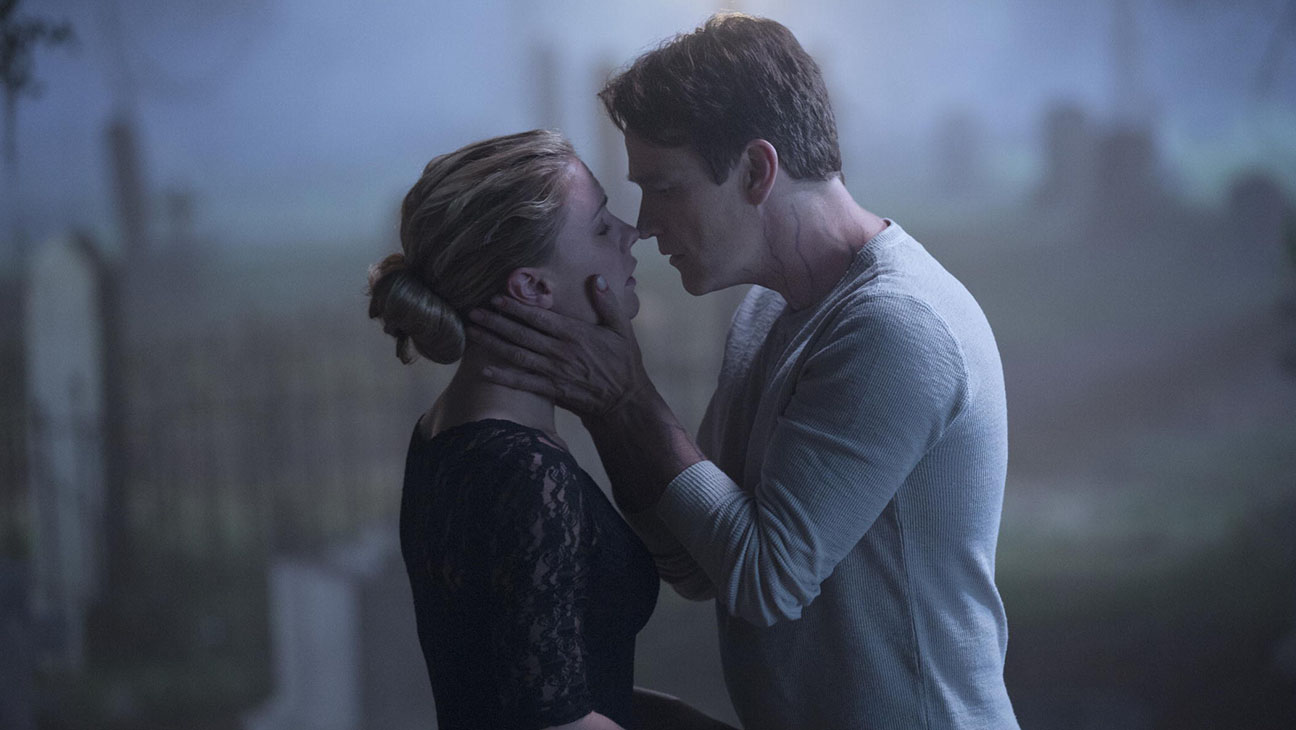Table of Contents Show
In the same year that the well known Twilight Saga saw its first movie hit theaters, another popular vampire series hit HBO: True Blood. While Twilight made waves as a teenage vampire love story, True Blood is arguably known for its explorations into the supernatural and its raunchy, sexy scenes with vampires. There is undeniably an undertone of social issues in the TV series as well.
The show begins two years after the invention of “True Blood,” synthetic blood that allows vampires to make their existence known to the world and to integrate into human societies. The first shot we see of Bill Compton, a main character of the series, is when he walks into a local bar in Bon Temps, Louisiana, and orders a True Blood — exposing what he is to the patrons. He is immediately met with a blend of curiosity and suspicion, and this is the viewers’ first hint that some sort of anti-vampire social conflict exists in this fictional society.
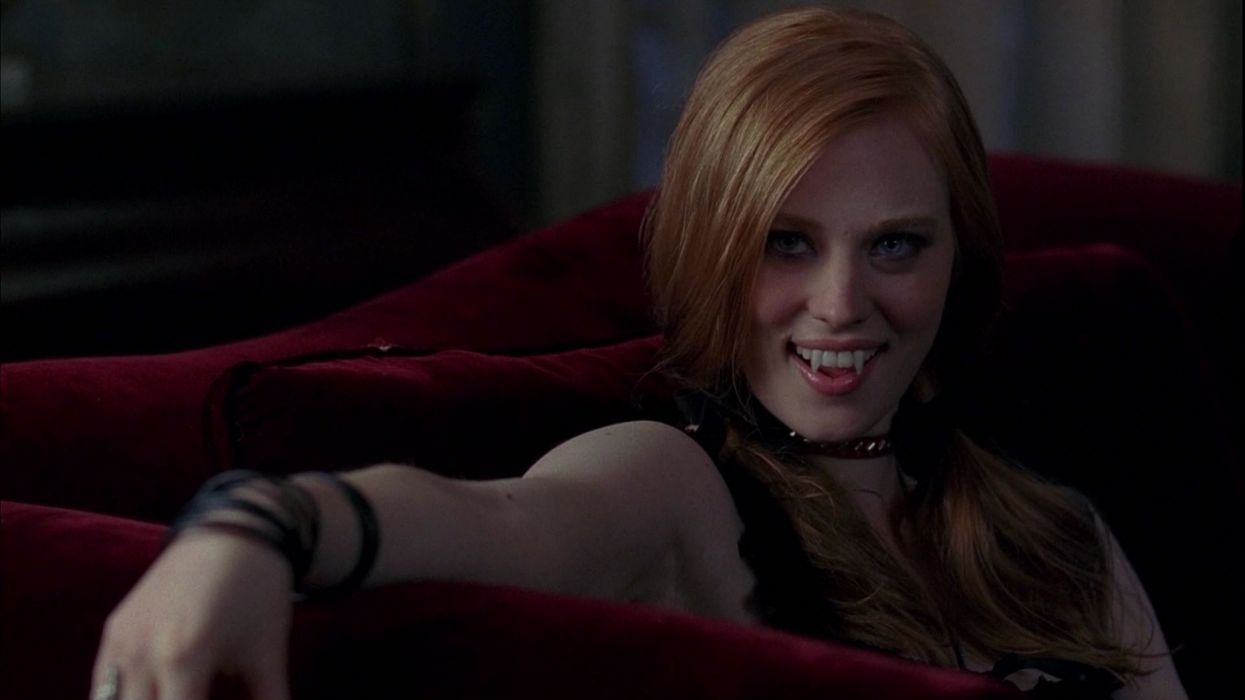
As True Blood continues into its first and second seasons, the instances of bigotry pile up. Entire churches adopt an anti-vampire stance, police appear to profile vampires as well as humans who have relations with them, and vampires are commonly distrusted, harassed, or fetishized by the people around them.
Much of the language people use to describe vampires is reminiscent of real discriminatory language, such as that of keeping the human species “pure” or saying that humans and vampires “ain’t meant to mix.” Anti-vampirism in True Blood calls to mind homophobic and racist ideologies from our own history, and since we’re made to sympathize with vampires, this provokes viewers to think about the absurdity of such prejudices in the real world.
Anti-Vampirism And Homophobia In True Blood
Vampires’ emergence into mainstream society is framed as a parallel to the queer experience of coming out from the very first episode of True Blood. The moment in which vampires made their social debut is known as when they “came out of the coffin” — a phrase that bears the same societal connotation as “coming out of the closet.” While the act of coming out allows vampires to live more authentically and to integrate honestly into human society, it also comes with a set of dangers and the frustration of not having equal rights. This mirrors aspects of life, inequality, and discrimination that LGBTQ+ people can face when coming out.
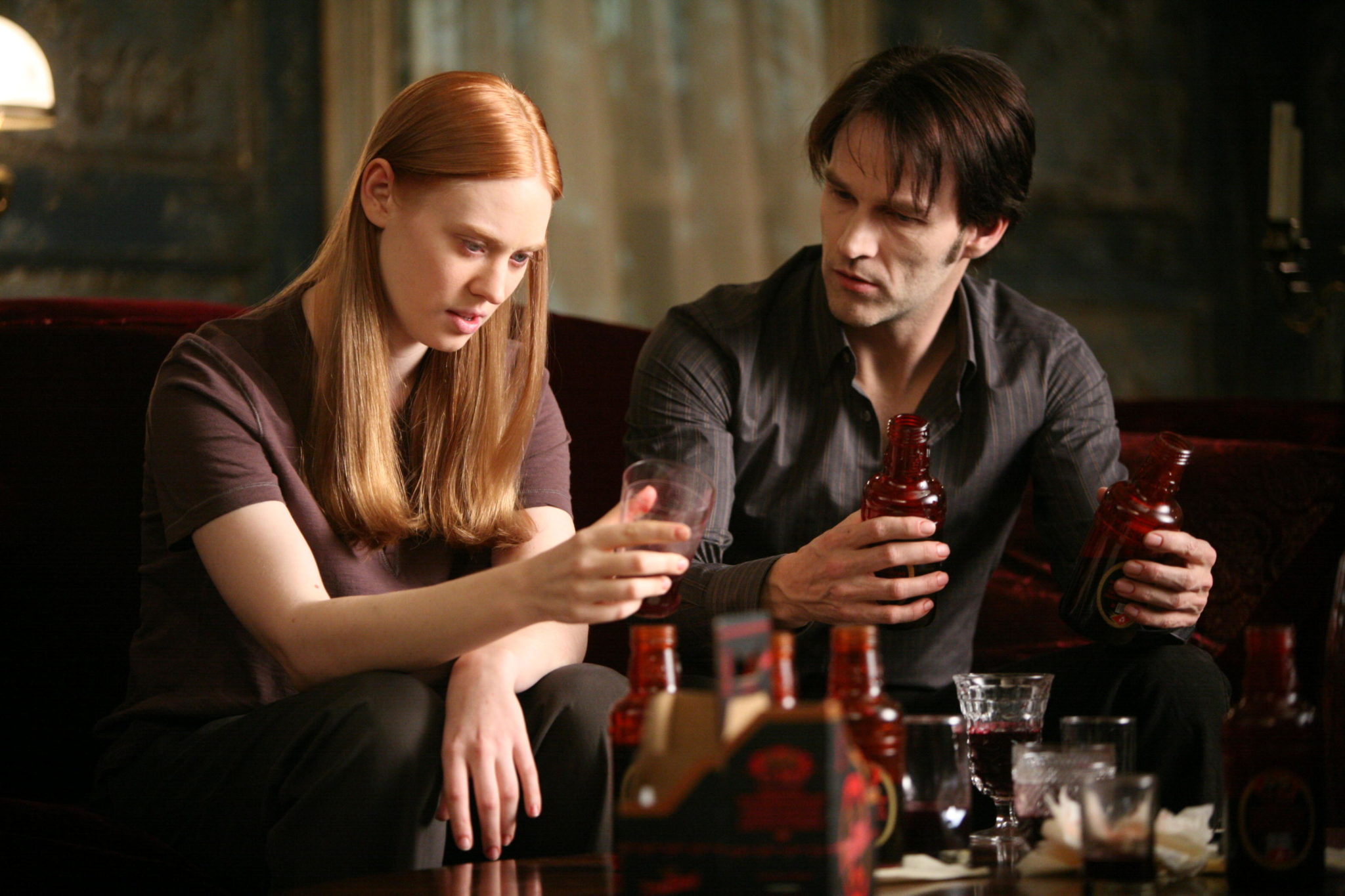
The concept of “otherness” is often the basis for discrimination, real or fictional, because it establishes a power dynamic. As sociologist Dr. Zuleyka Zevallos puts it, “social identities are not natural — they represent an established social order — a hierarchy where certain groups are established as being superior to other groups” (( Zevallos, Zuleyka. “What Is Otherness?” Accessed October 11, 2020. )).
In our world, we tend to construct dichotomies, or binaries, to understand social identities: man and woman, white and black, straight and gay, for instance. It follows that, in a social context, one group cannot exist without the other. In other words, we know who we are because we know who we are not.
From that list, things like man, white, and straight are dominant in our society and hold power only because the “other,” their counterparts, have been ranked lower on the social hierarchy. From the get-go, then, True Blood establishes the following dichotomy: human is “the one” and vampire is “the other” in the same way that straight is “the one” and gay is “the other” in the real world. Therefore, anti-vampirism’s language and social implications can be read similarly to those of homophobia.
Vampire-Human Sex And Relationships: Hatred And Violence
From the moment the mortal waitress Sookie Stackhouse takes a liking to vampire Bill Compton, she becomes the target of social backlash. Her friend Tara and her boss, Sam, respond with suspicion when she expresses her openmindedness toward him. Sookie is also telepathic and hears a barrage of judgmental thoughts when she approaches Bill for the second time, with one stranger even thinking, “Ain’t right, him being here with normal people.” In season two, when vampire Jessica and human Hoyt get together, Hoyt confesses what Jessica is to his bigoted mother, and she immediately looks distraught at the news. Vampire-human relationships of any kind are deeply frowned upon by other members of town.
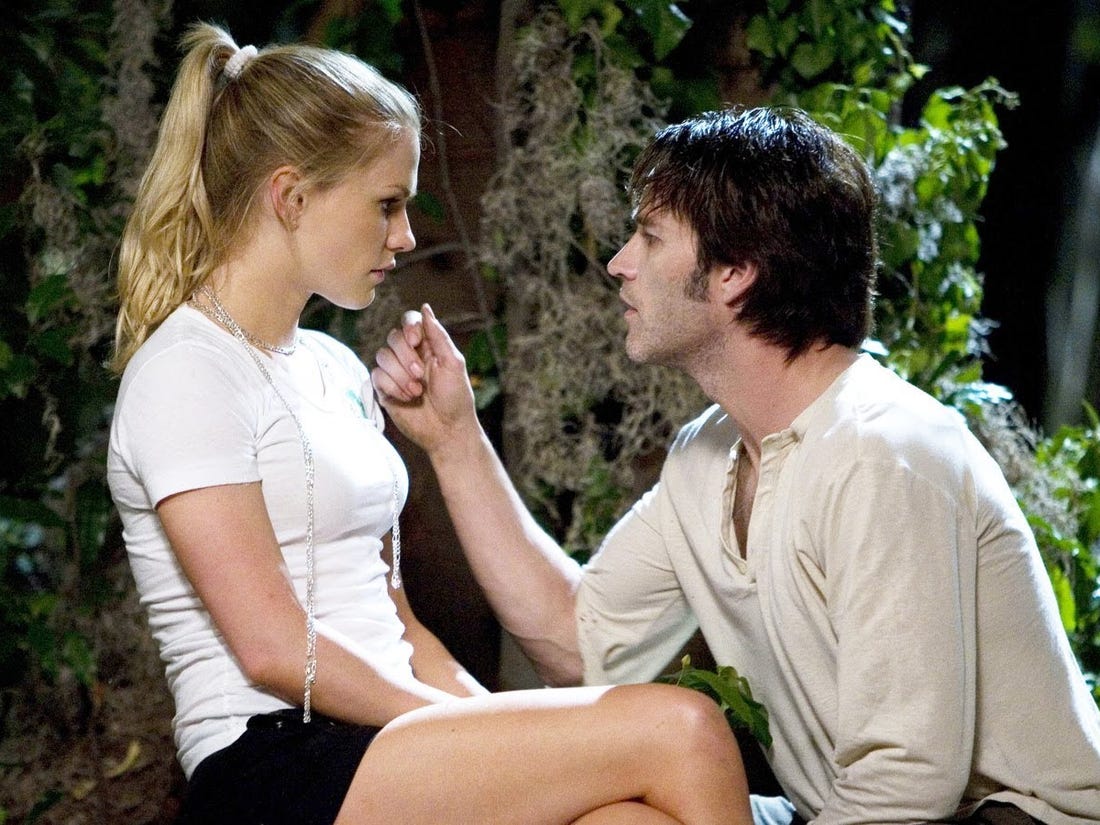
Later that same episode, the derogatory term “fangbanger” is introduced to define human beings that like to be bitten and/or have sexual relations with vampires. When young women who are known to be “fangbangers” start getting killed one after the other, it seems that Bon Temps has a bigoted serial killer on the loose. After Sookie and Bill get together, she finds herself in the crosshairs of that killer, a man who went so far as to murder his own sister when he found out she had been with a vampire.
This type of murder is reminiscent of anti-gay hate crimes in that people are killed for their sexual or romantic association with an “other” identity. On top of worrying about being murdered, Sookie finds it difficult to acquire help from law enforcement. Before she knows his identity, she reads the killer’s mind and sees a memory of his sister. She attempts to use what she saw to track down where he’s from and understand what happened to her.

She and Sam end up looking for help at a police precinct with signs on the wall that read “God Hates Fangs” — a pretty blatant nod toward the common homophobic protest, “God Hates F*gs.” When the cop at the front notices the bite marks on Sookie’s neck, he becomes patronizing and unwilling to help until Sookie blackmails him.
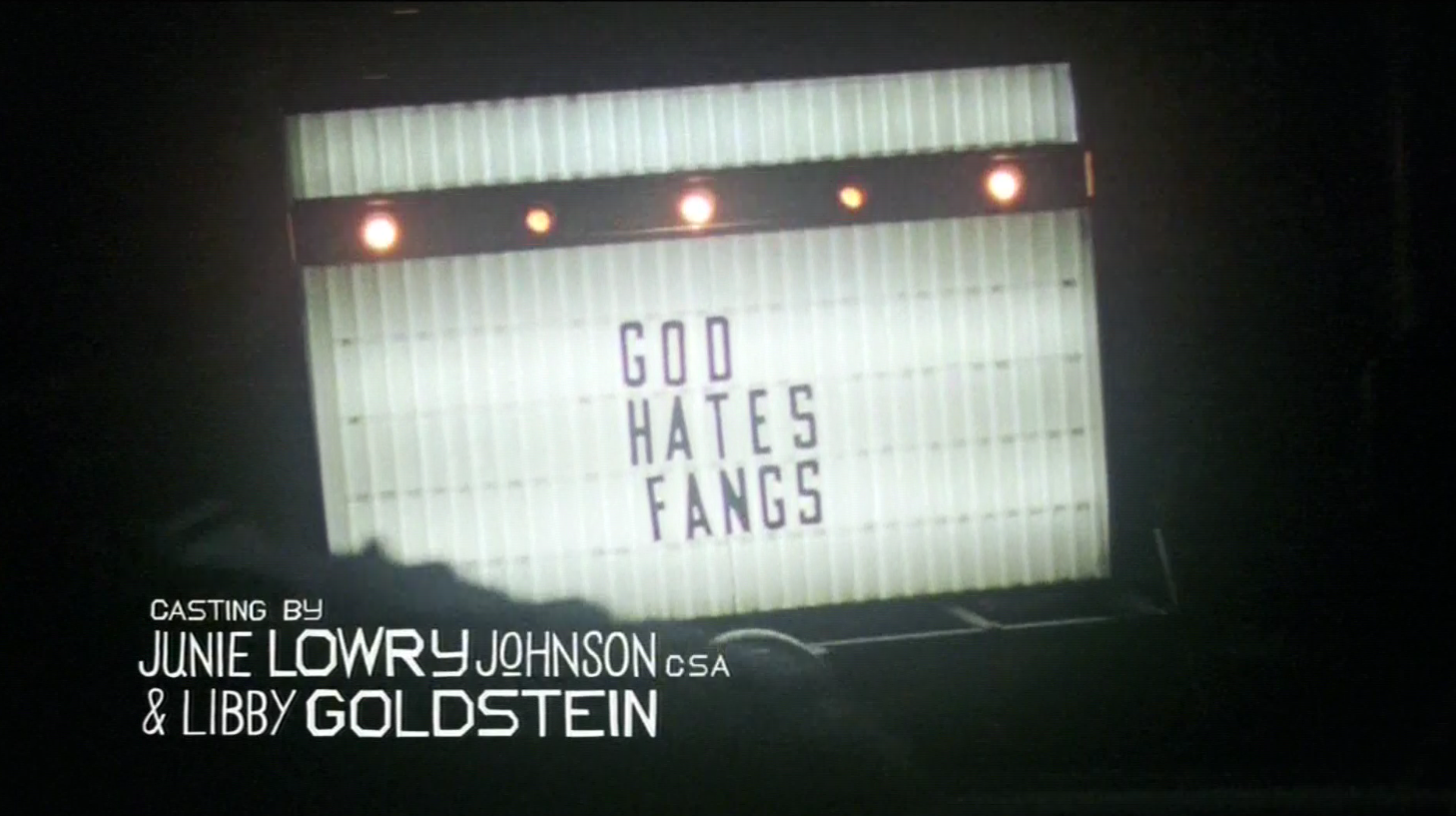
This is a pretty clear example of discrimination by a law enforcement institution, and if we’re to understand vampirism as a metaphor for homosexuality in this social context, it even calls to mind the anti-gay history of policing in the United States.
Marriage Legalization And Activism
Along with the more small-scale societal problems that arose with coming out of the coffin, vampires and their human partners face larger legal battles across the world. Nan Flanagan, the immortal spokesperson for an organization called the American Vampire League, makes several TV appearances throughout the first two seasons. She is always portrayed as an advocate for vampire rights, often arguing with conservative religious figures about how vampires deserve the same marriage rights as humans have.
Through activism like Nan’s and the marches for vampire rights that the character Sarah mentions attending in season two, vampire-human marriage becomes legal. Vampires and humans are shown on television having nighttime weddings and leaving churches surrounded by loved ones. The changed law allows Bill to propose to Sookie at the end of season two as well.
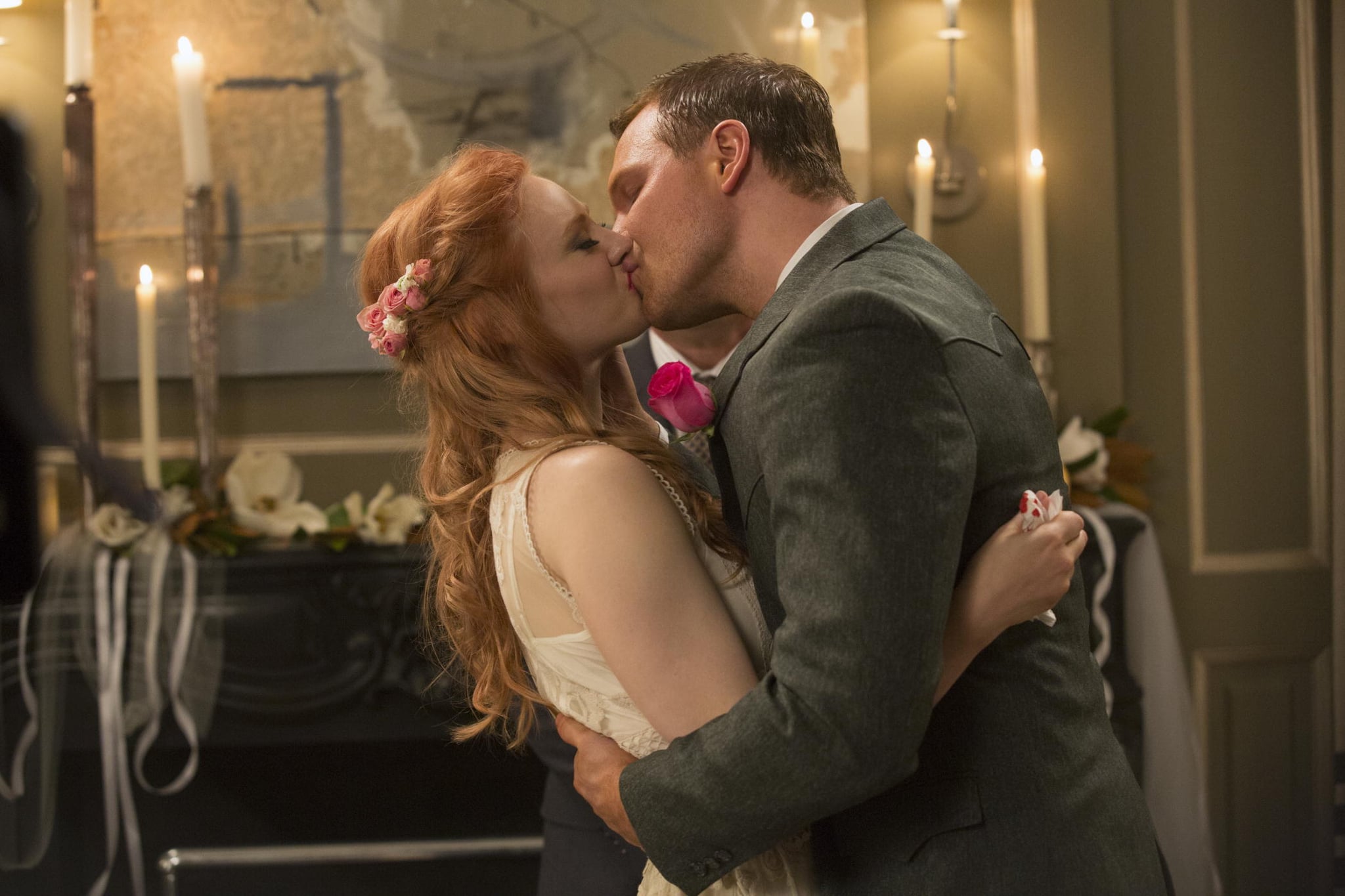
However, even with their new rights, vampire-human couples are still openly frowned upon in this society. This historic law, its legal battle, and its social implications closely mirror the fight for and aftermath of legalizing same-sex marriage in America. While the law is a step forward and certainly brings many vampire-human couples relief and joy, it doesn’t signal the end of discrimination across the country, nor does it apply to couples outside of the United States.
Echoes Of White Supremacy In Anti-Vampire Language
Not only does anti-vampirism serve as a metaphor for homophobia, but much of the anti-vampire language also echoes the rhetoric of modern white supremacy. According to the Institute for National Security and Counterterrorism at Syracuse University, “the main objective of the [white supremacist] movement at large is to maintain the ‘purity’ and dominance of the white race by protecting white, Christian populations from a feared ‘genocide’ by non-Whites.
As such, they strive for a future where non-Whites and non-Protestant Christians are segregated, subordinated to Whites, or completely destroyed” (( Blessing, Jason, and Elise Roberts. “The Rhetoric of White Supremacist Terror: Assessing the Attribution of Threat.” Working Paper Series, 2018. )). It is most likely an allusion to race issues, then, when characters in True Blood discriminate against and threaten vampires for the sake of keeping the human species “pure.”
Religious Extremism In True Blood
The most blatant example of anti-vampirism as a metaphor for racism and white supremacy is the existence of the Fellowship of the Sun Church. A spokesperson for the church first approaches Jason Stackhouse, Sookie’s brother, when he’s in jail after being mistaken for the serial killer. Viewers may first feel that something is wrong when this supposed man of God honors and commends Jason for murdering women who are associated with vampires.
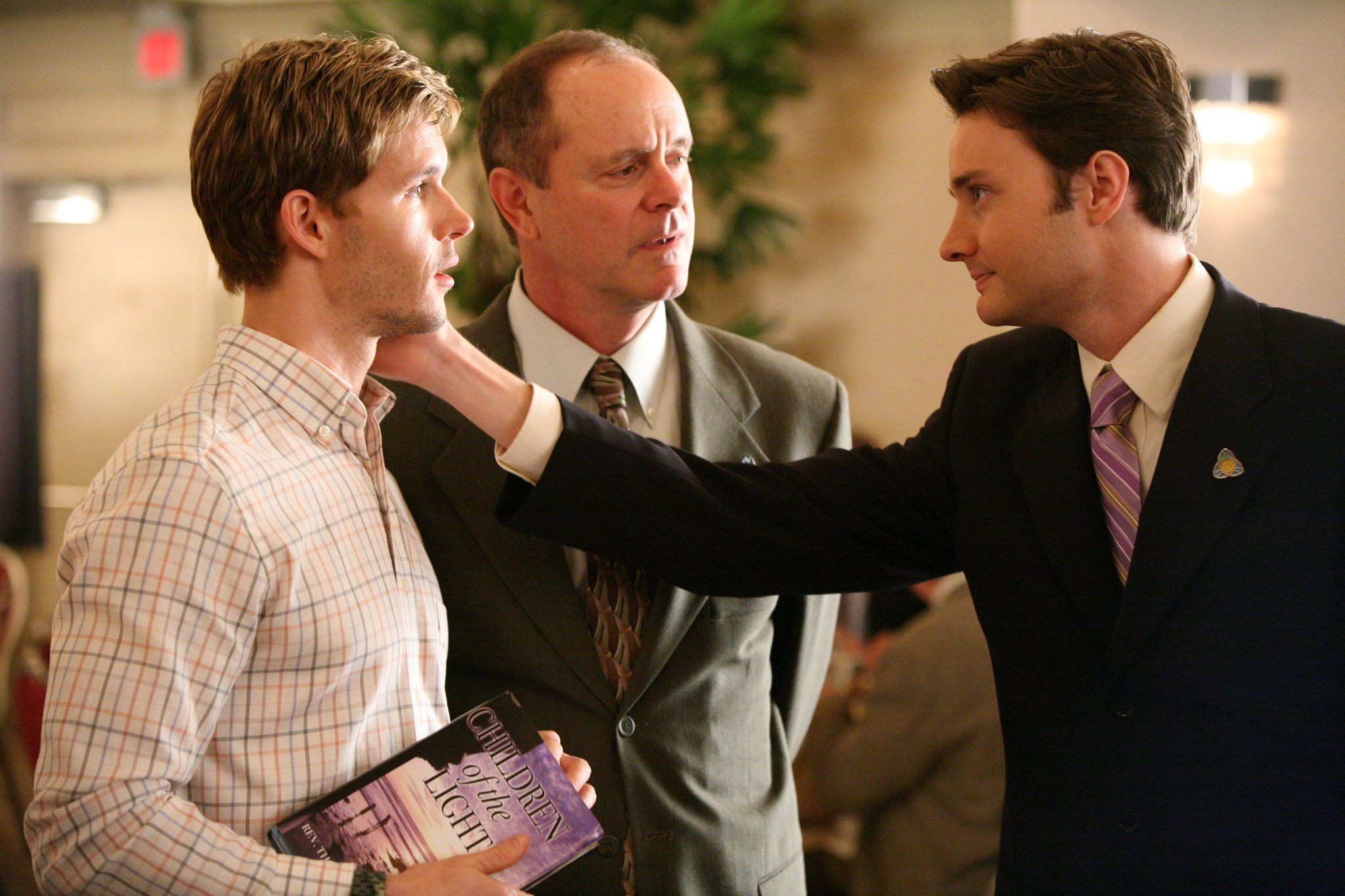
He says, “What you did — it was a service to your race and to Jesus, and you should be proud of that… Officially, the church can’t condone what you did. You took the lives of four women — women who had tainted themselves and their race — but still human women. We do recognize that even though your methods may have been flawed, your intentions were pure.” This language of women tainting their race is eerily reminiscent of white supremacist rhetoric that revolves around keeping the white race separate and pure. It is noteworthy, too, that the approval of murder comes out of a church representative’s mouth — this is the first sign that this is a radical religious cult and not a real Christian institution.
Steve Newlin: Christian Savior Or Destructive Cult Leader?
As season one of True Blood ends and season two begins, Jason finds himself lacking purpose and becomes more and more enamored with the church. He meets Steve and Sarah Newlin, the couple who run it, and embarks on what at first seems to be a spiritual journey by leaving home and going to Texas for the church’s Light of Day Institute “Leadership Conference.”
Over and over, True Blood audiences hear anti-vampire rhetoric that involves vampires being animalistic, a threat to the human race, and a disgrace to God’s wishes. As the season continues, it becomes more and more evident that Steve Newlin is more of a destructive cult leader than a devoutly religious man.

Sarah reveals to Jason, who has been selected by the couple as a “soldier of God” for his superb marksmanship, that Steve wants to use his following to start a war to kill vampires en masse. Behind closed doors, we also see Steve’s cruelty in how he eagerly awaits his planned execution of the vampire Godric by burning him on a cross, which is a symbolism that is largely associated with the KKK. Steve’s hatred for vampires and desire to start a species war call to mind cult leaders like Charles Manson, who predicted a race war and looked to destroy and dominate black people.
What exactly is a destructive cult, though? They differ from other types of cults in that they involve some sort of harm or violence. The American Psychological Association’s feature on “Cults of hatred” reads: “Cult leaders are usually psychopaths with a desire for power and often take ideas from politics, religion, and psychology to fulfill their purpose… Through mind control, they are able to filter their thoughts and behaviors into ‘fanatical faith and belief’ among followers” (( Dittmann, Melissa. “Cults of Hatred.” American Psychological Association. American Psychological Association, 2002. )).
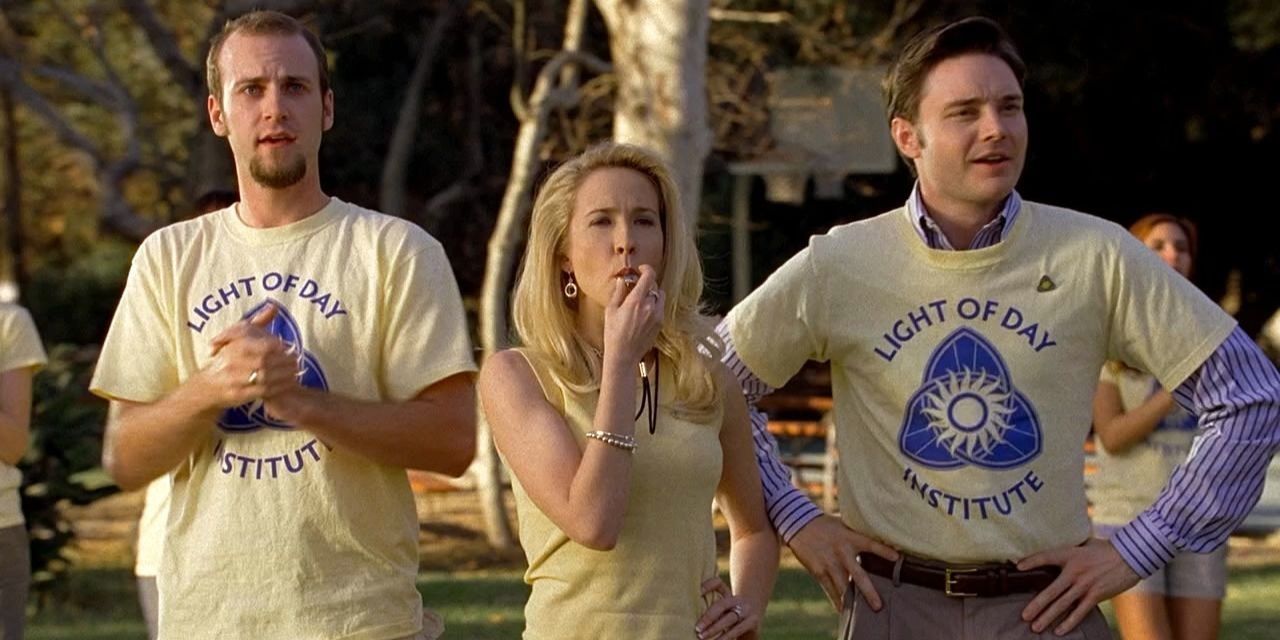
In this case, if we are to read Steve Newlin as a cult leader, he uses a warped vision of Christianity and the human instinct for self-preservation to sow fear and hatred of vampires amongst his followers.
Certainly, the details of Steve’s intentions are not accidents in scriptwriting — these appear to be clear indicators that Steve and the Fellowship of the Sun Church have much more sinister intentions than Jason first believes. Not to mention, Steve has managed to secure such unwavering loyalty among his followers that, after Godric escapes and humiliates him in the process, he is able to send a group of young men to suicide bomb the local vampire nest in Dallas. Not only is this a destructive cult, but its anti-vampire mission can certainly be read as similar to white supremacist rhetoric and terrorism.
Why The Metaphor Matters
True Blood‘s anti-vampirism standing as a metaphor for homophobia and white supremacy is important not only for the fictional world of Bon Temps but certainly for our world too. Viewers of the show can use this metaphor to deconstruct real discrimination, especially since vampires are certainly not portrayed as the animals and villains that bigots and extremists in the show make them out to be. Vampires are supposedly monsters, but so many of them are compassionate emotional beings. The eldest among them, who happens to be Godric, has real empathy for humans and spares Steve and all of his cult followers even when they still refuse to live in peace.
Vampires are not all the horrible things that their stereotypes and their biggest opponents make them out to be. And if vampirism is a stand-in for homosexuality or racism, perhaps True Blood‘s real message is to think twice about homophobic or racist stereotypes, too. Perhaps the truth behind the discrimination and outright prejudice against these groups in our society is that these ideologies are fueled less by truth itself and more by fear, hatred, and misconceptions.
